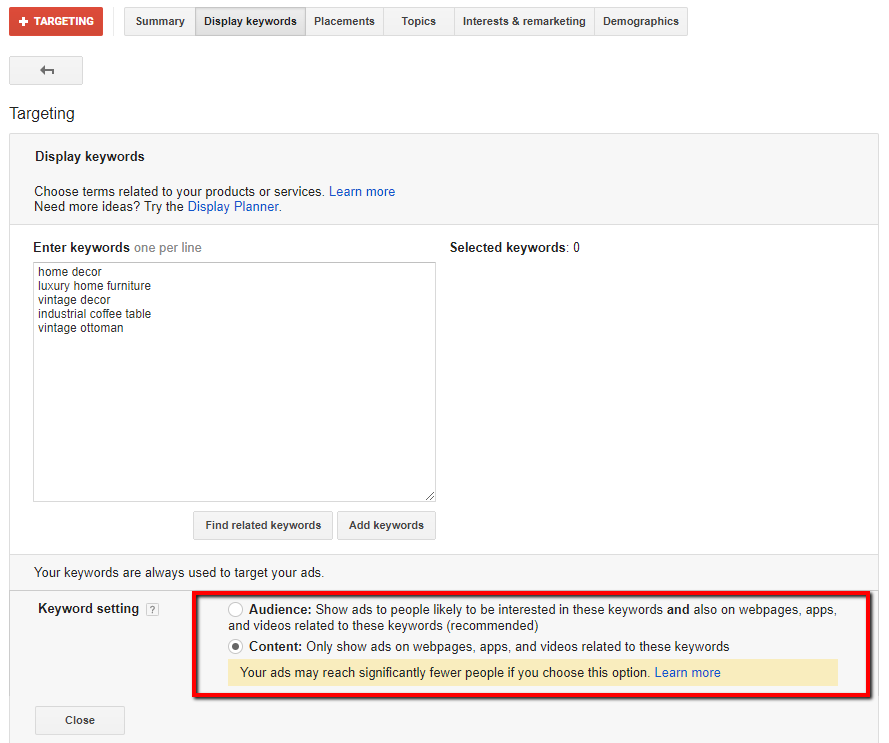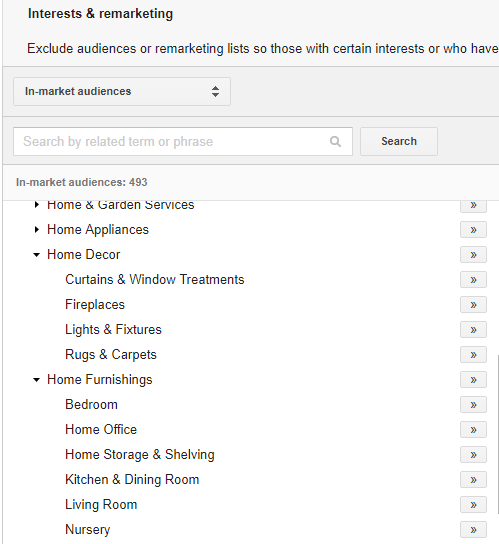This is Part 2 of my blog series on crafting and executing killer demand gen strategies.
In Part 1, I discussed building out various personas to target, as well as how to craft the right creative. Now let’s chat through how to actually target these personas!
Both Google Display Network and Facebook have great audience targeting capabilities that allow you to get in front of your target audiences and the personas you have built out. Full disclosure: I was planning to wrap the GDN and Facebook together for this post, but both have so many features that they warrant their own edition.
So let’s dive into how to target your personas and audiences on the GDN, and save Facebook for Part 3.
Keyword contextual targeting (KCT)
Keyword contextual targeting is where you bid on keywords and Google will match you to pages relevant to your terms. You’ll notice two options when it comes to KCT:
- Content – shows ads on relevant webpages, etc.
- Audience – with this option, the ad will show on relevant pages and to people who might be interested in these keywords (so basically you are giving Google more control to do its thing).
My recommendation is to start off with Content, because you know exactly what you are getting into; don’t give Google control right away and make it hard to understand true performance. Content will have a lot less reach, but you have full visibility into things. As you begin seeing results, you can always adjust accordingly.
My general recommendation is to start off with your top 10-15 performing search terms – and then, of course, layer on demographic age and gender information so you are getting in front of the most relevant eyes.
Additionally, think about the personas you developed. In Part 1, I gave the example of a persona that loved celebrity fashion and gossip; building terms around those interests to get onto those pages is another way to get in front of the right eyes.
Custom Affinity Audiences
With Custom Affinity Audiences, you can input domains and Google will look at the types of users visiting those domains – makeup, demographics, topics of sites they visit, etc. Then Google crafts an audience similar to those users, which you can target.
With Custom Affinity Audiences, I recommend creating different audiences to target based off of:
- Competitor domains
- Industry-relevant websites
- Persona-relevant websites (think of the personas you have created and the types of websites they would visit)
In-Market Audiences
With In-Market Audiences, Google identifies people who are actively shopping for certain products and services. This is pretty clear-cut – choose In-Market Audiences relevant to your business.
Don’t forget to leverage the audience insights that Google gave you when developing your personas; those typically showcase other products/services that your core audience is typically in market for!
Refine your targeting to get closer to your target personas
For both KCT and In-Market Audiences, I recommend that you further refine your targeting by applying demographic layering onto those campaigns to get closer to your target personas. (With Custom Affinity Audiences, Google already incorporates demographic information from the data they pull as they analyze the audiences visiting the sites you enter.)
The above strategies are well worth testing out as you look to get in front of the right eyes and scale your business.
In part 3, we’ll dive into Facebook and how to best leverage its advanced targeting capabilities to get in front of your personas and target market!
source https://searchenginewatch.com/2017/11/14/killer-demand-gen-strategy-part-2-google-display-network-targeting/



No comments:
Post a Comment